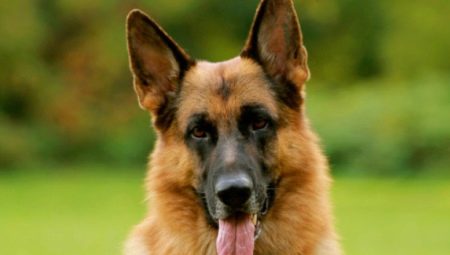Nowadays, German shepherds are very popular among dog lovers. They can be faithful companions, even if they are at home, as they get along well with young children. However, they are often turned on as guard dogs. Some are actively taking representatives of this breed of dogs to exhibitions, so it is especially important for such people to monitor how the ears of a young pet stand. We suggest considering the age at which ears rise, how to put them in a puppy at home, as well as possible causes if they did not stand up.

Features of the development of the shepherd’s ear
From birth, like all other dog breeds, the ears of shepherds are not fully formed. At an early age, they are quite soft cartilage that are very tightly attached to the head of the puppy. After some time, his ears begin to grow with him, increasing in size. The moment of ear formation cannot be missed because, having reached a certain stage of development, the cartilage will be transformed into an elastic plate that cannot be changed.
The perichondrium is responsible for the formation of the ears - it depends on her how the puppy's ears will develop. It becomes a kind of conductor due to small vessels and capillaries, through which the necessary substances responsible for its growth and formation penetrate into the cartilage.
Thus, the formation of the ear takes place - as if by brick, with the help of stem cells its regular form is created.

When do ears start to rise?
Many note the fact that a puppy of a German shepherd has ears at an early age much larger than the size of the head. This is due to the active activity of absolutely all parts of the puppy's auricle. From about two to four months, cartilage cells in large quantities begin to secrete collagen and elastin - substances that promote ear growth. Thus, the development of the ears is ahead of the general development of the dog.
In the first period of the development of a small shepherd, one should not raise panic because of the shape of her ears. At this age, cartilage should be in that position. One of the features that causes inexperienced owners to raise a panic is the initial formation of the ears of the dog, and after - their fall. This phenomenon is directly related to the change of puppy's teeth. Thus, it turns out that at the age of 2 months, the ears may rise, and after a month fall again. This is a natural process with which nothing can be done, therefore Do not worry ahead of time.

When a puppy is 4 months old, the production of growth-stimulating substances decreases dramatically. So, by the age of 5 months it practically reduces to zero, it is during this period that the auricle acquires a certain structure and density. There is no need to worry if the cartilage is not standing yet. Perhaps they will rise 30-45 days after the due date - this is still considered normal. Now, if the dog reaches 8 months of age, and the ears are still hanging, then, no doubt, you need to sound the alarm.
Many make a mistake and follow the formation of cartilage from the very birth of the German Shepherd, but this is too early an age for staging. It should be borne in mind that each dog will develop in its own way, so do not expose your puppy too often to inspections.
It is best to simply rejoice at the pet's maturation, teach the teams and play with him, while monitoring the healthy nutrition of the dog.

Prevention for becoming
To be sure that the ears will stand up, it is advisable to provide the dog with all the vitamins required for their formation, as well as performing simple procedures for better formation. We suggest considering the main ones.
- Many dog breeders add bone meal, various fish, and kefir to the puppy's standard diet.
- It is advisable to massage the dog’s ear, which is necessary for proper blood circulation and strengthen cartilage, but this procedure should be performed carefully so as not to harm the pet.
- The owner may intentionally make sudden sounds or rustles. Thus, the puppy will strain his ears and stand up to catch the sound.
- It is required to monitor the health of the puppy. In case of any deviation that you can detect (for example, irritation, allergies), you should immediately go with your pet to a qualified veterinarian for advice.

The reasons why ears do not stand up
As mentioned above, if the dog has reached a certain age, and the ears have not stood up, then this can be due to various factors. It is very important not to miss the moment and contact the clinic with specialists. The veterinarian will examine the dog, ask you a series of questions, and then determine the exact reason why the ears do not stand up.
The most common causes of this deviation are the following.
- Injuries to the ears during the birth of the baby.
- Diseases directly related to the ears.
- An allergic reaction of the body to certain products.
- Earlier diseases before the formation of the ears.
- Improper dog keeping conditions, including inappropriate diet.
- Lack of essential vitamins for becoming.
- A small number of walks in the fresh air.
- The use of the wrong bio-nutrition or lack thereof in the diet.
- Parents of the pet have some kind of hormonal disruption.
- The puppy's height and weight are not age appropriate.
- The occurrence of any stressful situation that affected the dog.
- Bad heredity.
- The reaction to vaccination or its absence. So the body of your pet can fight one of the viruses.

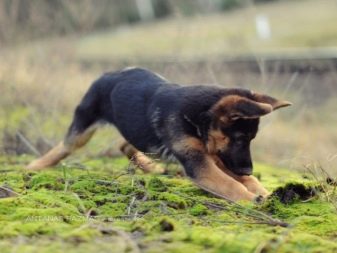
What to do
It is wise to contact a qualified veterinarian first. Only a specialist can accurately determine the causes of such a problem and suggest a solution. In addition, there are a number of ways thanks to which at home you can help the ears of the German Shepherd dog to grow stronger and form, acquiring the correct shape. They should also be discussed with the doctor.
Most veterinarians claim that if by the age of 8 months the ears are still not standing, then they will never rise. In this case, the only solution will be a surgical operation, during which artificial implants are implanted in the puppy, giving the desired shape. Of course, the problem will still remain, but the dog will have the necessary characteristics to participate in various exhibitions.
It should always be remembered that the dog does not have a full guarantee of the natural formation of the ears, so check your pet regularly.
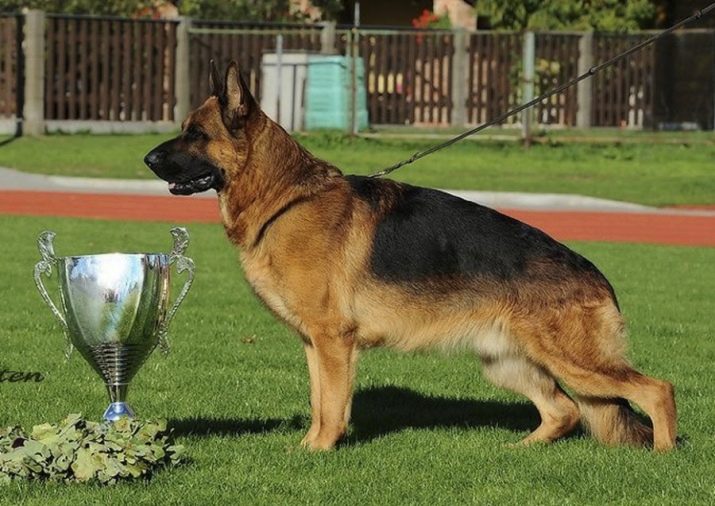
Ways of setting
We suggest considering some of the most effective ear placement methods. In the first case, the owner will need to have large foam rubber curlers (an alternative may be a small tube), a white surgical patch, medical glue, as well as a solid (without sharpening) pencil, stick or any other oblong object.
- Remove the central axis from the previously prepared curlers and insert a 20 mm stick inside. The surface of the curler is to be coated with glue.
- The design is inserted into the dog’s ear so that it does not harm the puppy and does not block access to the auditory canal. When the curlers are delivered, it is necessary to press the surface of the ear so that it sticks to the medical glue, but do it carefully.
- After that, you need to glue the ear and curlers with a band-aid. At this point, you need to hold a pencil or stick, depending on what you have chosen. The wrapping process must be started from the bottom up, while it is required to perform this not too tight so as not to harm the baby and not disturb the blood circulation. As you come to an end, the wand is removed from the curlers.
- The next step is ear stabilization. To do this, you need to attach a stick from the ice cream to the back, and then fix it. This will lock the selected position.
- The puppy needs to be distracted so that he does not remove the bandage until a certain time.
- The winding should be on the ear for no more than two weeks, the optimal period will be 10 days.
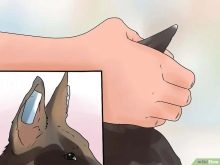
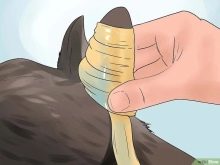
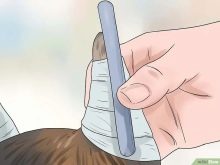
Even if only one ear is not worth it, such a procedure is performed for two.
Another way is to provide the puppy with the necessary amount of calcium. To do this, you need to give the puppy a tablespoon of cottage cheese or yogurt at each meal. However, you should refrain from acquiring and adding dietary supplements to the diet, because excess of this element can be deposited in the bones, and this will subsequently lead to a number of problems.
The most gentle way of setting the ears is gluing.
- A pair of identical pieces of cardboard is taken.
- The puppy’s auditory canal is plugged with cotton and a weak area of the ear is shaved, where cardboard will be glued. It is required to process the trimmed area and the sticky side of the patch. Such a procedure is required in order to exclude painful sensations during further removal of the adhesive. After the treatment has dried, the patch is glued and smoothed in the selected place.
- Then a piece of cardboard is taken and lubricated with quick-drying glue. It must be glued, holding the ear, and then fix the selected position with a plaster.
- Bonding is kept on the ears for no more than two weeks.
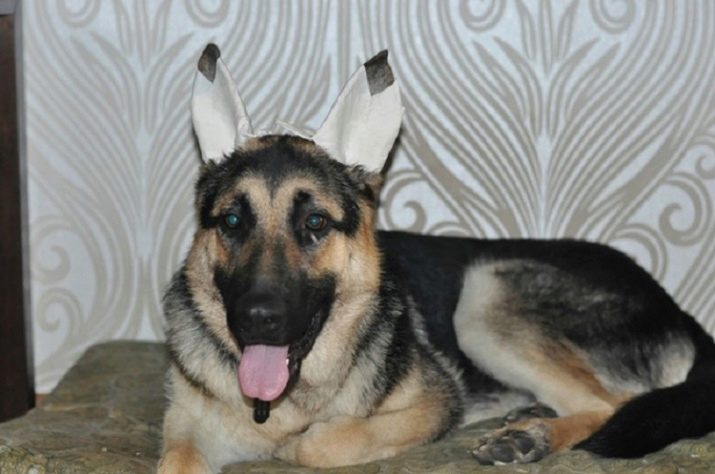
What to do when ears are up?
After the formation of the ears, it is necessary to prevent them from falling again. This may well be if you stop paying attention to the cartilage as soon as they have acquired the correct shape.This requires constantly making loud noises, but so as not to frighten the dog, this will allow you to keep your ears alert. It will be useful to massage the ears for better blood circulation.
When setting the ears of a German Shepherd puppy, special attention is required. Naturally, not every owner needs them to be of the correct form, since not everyone gets a dog to participate in competitions. However, it should be understood that the set ears of the shepherd - this is correct both from the aesthetic side and from the physiological one.

About two ways to raise the ears of a German shepherd, see further.
